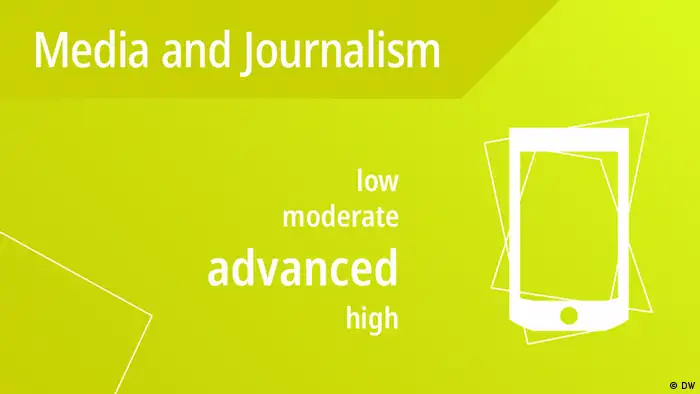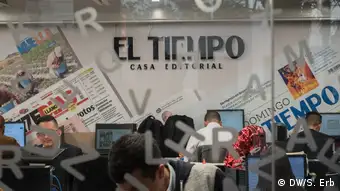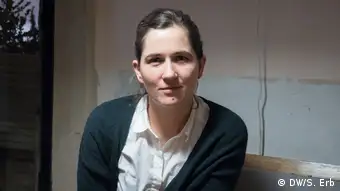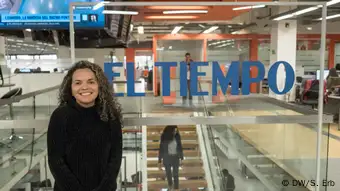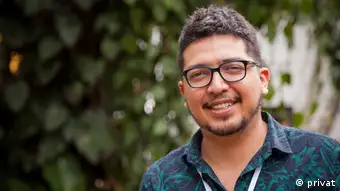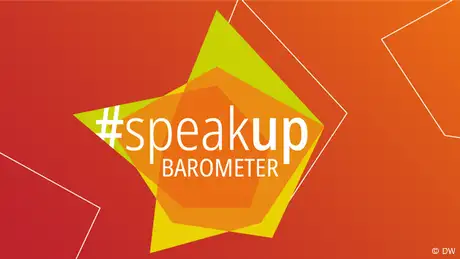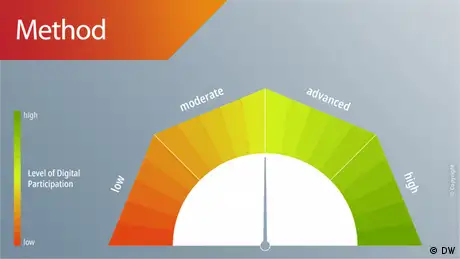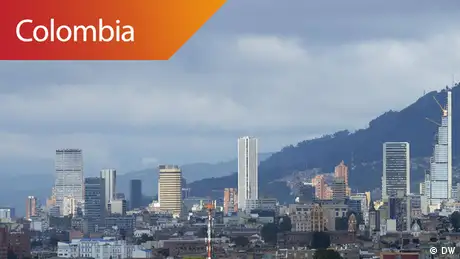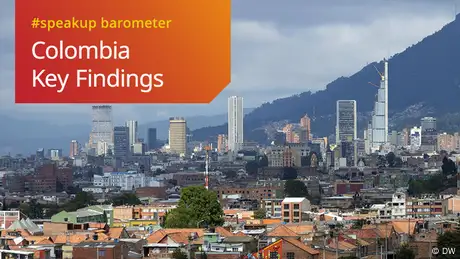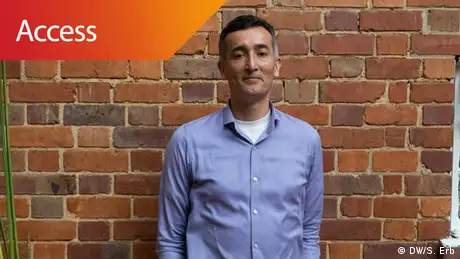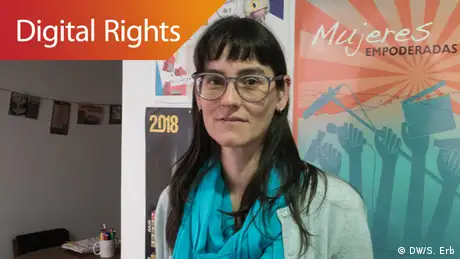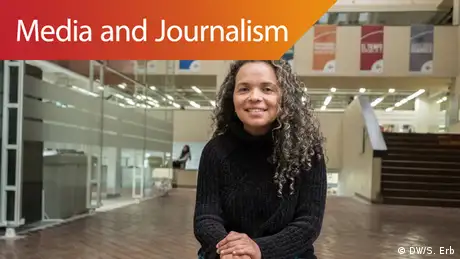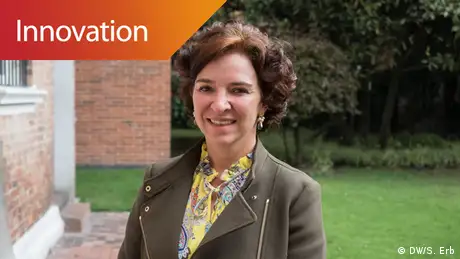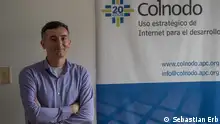#speakup barometer | Colombia
New digital alternatives are highlighting issues the powerful would like to ignore
The traditional media outlets in Colombia are owned by the country's elite, leading to a lack of critical reporting of those in power. That's an opportunity for newcomers – but securing funding remains difficult.
Key findings
— There has been an "explosion" of digital media outlets in Colombia
— Digital media sites offer a greater variety of content than traditional media outlets
— Most of the websites are based in the capital and other big cities
— Born-digital media outlets mainly depend on external funding
— The insecure financing of digital media outlets also has an impact on their independence
As more and more of Colombia goes online, people are beginning to use a greater number of online portals to access information. At first, there were only a few alternatives to choose from: the websites of the national newspapers, weekly magazines and radio stations, which were still very focused on their classic format but also publishing content on the Internet. From there, a unique development within Latin America became apparent.
"In the last 10years there has been a huge explosion of digital media," according to María Paula Martínez, journalism professor at the Universidad de los Andes in Bogotá. Some exist for just a little while, others remain, but audiences are very different in size. Many of them offer local regional content or have a thematically specific focus, such as on sports news. A recent studycounted 680 digital media websites in Colombia, one third of which are based in the capital.
These media newcomers – such as "La Silla Vacía (The Empty Chair)" – can log up to 500,000 visits a month. In comparison, the largest news site, the online version of the print newspaper "El Tiempo," receives 5 million visits. But despite their comparatively small size, these digital outlets have gained a greater relevance in national public debates.
Soon after its creation in 2009, "La Silla Vacía" was already very successful and had gained substantial recognition. According to the”Mapping Digital Media” report, that’ "because it provides reliable information and investigative journalism stories." The report also cited a 2010 survey among opinion leaders that listed "La Silla Vacía" as the fourth most-read publication and the third in the capital Bogotá. From the very beginning, the website dealt with political scandals, including the one surrounding Colombia’s "false positives" scandal. As part of their reporting on the scandal, the website published documents on members of the military who were accused of killing civilians in order to subsequently claim that the dead were guerrilla members. The study points out that those documents "actually helped the families of the victims to gather evidence for a legal process."
More diverse than traditional media outlets
Traditionally, private media outlets in Colombia are owned by the country's elite. They "participate in other economical business sectors as well as in politics. This puts independence of the editorial lines of media outlets at risk as well as reinforcing self-censorship of the journalists," states the Media Ownership Monitor by Reporters without Borders. This creates a very conservative atmosphere in the newsrooms of traditional media outlets, leading to a lack of critical reporting on the powerful. In contrast, new media outlets not only increase plurality as such, but also often take a progressive approach, with a strong focus on human rights, social inequality and sexual diversity.
Certain digital alternatives such as "Las Dos Orillas," founded in 2013 by several nationally renowned journalists, do provide national cross-spectrum coverage as well as trying to highlight issues that don't appear in the traditional media. Some target a particular area, such as the underreported Pacific region. Others are very specific in content. For example, Mutante.org, founded in 2018, focuses on sexual violence against girls. Compared to the content provided by the classic media, these new outlets allow people to inform themselves about issues that are sometimes more relevant to their reality. They also manage to establish a strong connection to their readership, leading to a longer-term engagement with the issues.
A remarkable number of digital media sites take an investigative approach. They don't rely on breaking news but deal with an issue intensively and for a sustained period of time. The media organization Conectas, for instance, participated in the "Panama Papers" investigation.
"We seek to experiment with all kinds of technology, platforms, narratives and concepts, to explain how power relations are woven and operate in Colombia," says founder and director of La Silla Vacía, Juanita León, cited in the "First Study of Digital Media and Journalism in Latin America," which recognized the site's "good digital practice."
It’s not just websites that are enriching journalism and thus social discourse in Colombia: There are also important political YouTubers, as well as media content produced by minorities, including indigenous groups, on social media. For example, the Nasa, an indigenous community in southwestern Colombia, produce a podcast that reaches its audience via WhatsApp. This is a small step toward amplifying the voices of under-represented groups.
Money from foundations and international grants
When discussing the potential of digital media in Colombia, one important question cannot be ignored: Where does their funding come from? Online journalism is a complicated business, even for traditional media outlets, since Colombians are used to free content on the web and revenue from online advertising is very low. Only recently have media companies instituted paid content models. For its part, the public media – TV and radio – depends exclusively on state funds.
Compared to traditional media, new digital media outlets require a relatively small budget simply because they are much smaller, often employing only a handful of people. They also have a large number of university-trained journalists at their disposal – who are usually not well paid. "Journalism in Colombia is a titanic job," says Ginna Morelo from Consejo de Redacción, a journalists' association, "You only do it if you believejournalism is necessary for democracy."
Since the websites still can't run their business purely on advertising revenue, they all depend in principle on external donors from the philanthropic and development cooperation sectors.. La Silla Vacía, for example, has received funding from the Open Society Foundation, but also tries to make its readers aware of their responsibility toward the site through crowdfunding campaigns. This in turn allows readers to have a say in how research priorities are set.
Independence is difficult
In both the public media outlets and the large private collections, the situation is relatively clear: Their ownership structure severely limits their independence, as does their pronounced dependence on advertising, primarily from state institutions and large companies. There may not necessarily be any clear red lines for reporters, but the fear of losing one's job can nonetheless lead to self-censorship.
In this respect, the new media outlets have an advantage, although they also depend on others, who come with their own particular interests. "Pacifista," a website founded by "Vice" which covers the peace process, even received direct subsidies from the Colombian government. There has been no indication that donors will interfere directly in editorial matters, but the selection of topics to be funded is nonetheless determined by their agenda.
What experts say
María Paula Martínez, journalism professor at the Universidad de los Andes in Bogotá
For Martínez, it is problematic that Colombians do not question what the media offers them. She stresses that new digital media outlets should further emphasize their advantages in comparison to the big newspapers' websites. "The independent media have a lot of flexibility compared to the traditional ones. I'm not convinced that they are using this so much. They should stress more that they don't belong to a big bank or another big company."
Ginna Morelo, co-founder of Consejo de Redacción and data journalism editor, "El Tiempo"
As a journalist focusing on research and innovation, Morelo points out that, compared to the traditional media outlets, independent media is making a greater effort to explore new issues. She also sees a need to improve training in digital journalism. "They have it in mind nowadays, but the occupation with digital journalism is still much too academic, it doesn't migrate strongly to the practice."
Pedro Vaca, Executive Director of the Foundation for Press Freedom (FLIP), Bogotá
Vaca underlines that a strong foundation for investigative reporting exists for journalists in Colombia. The Law on Transparency and the Right to Access to Information meet international standards. "But in practice, it's more difficult," Vaca says. "The state is not very prepared to act as it would be necessary." For that reason, journalists should take more advantage of the law in order to strengthen its enforceability.
Recommendations
— Make media financing more sustainable
In order to increase and secure the quality of digital media, sustainable financing is essential. In order to maintain independence, funding should not come from a select few external donors. Instead, the media can orientate itself on the best practice examples in the country, how to secure financing primarily from readers, but also through advertising and other revenue streams (such as conferences and seminars). In the medium term, the media should also create a financial basis which allows for more continuous critical reporting.
— Improve working conditions
The output of media organizations greatly depends on the people working there. Since working conditions in journalism in Colombia are quite poor (badly paid and not very predictable), there is a need for improvement, including better professional training for both new and established journalists, and continuing education on the job. This is particularly true in rural areas, where work is much more dangerous due to the greater influence of various violent actors.
— Establish local media
While residents of Colombia's larger cities enjoy an ever-expanding variety of media, things are quite different in the countryside. Since there is often only a single information source in many municipalities (or none at all), local journalistic initiatives should be encouraged to use their – hopefully – soon-improved Internet connection to create high-quality media products that more closely resemble the lived realities of their audience than those produced by the media in Bogotá
The #speakup barometer is a DW Akademie project that examines the connection between digital participation, freedom of expression and access to information. Learn more at www.dw.com/barometer
DW recommends
- Date 18.02.2019
- Author Sebastian Erb
- Feedback: Send us your feedback.
- Print Print this page
- Permalink https://p.dw.com/p/3DatF
- Date 18.02.2019
- Author Sebastian Erb
- Send us your feedback.
- Print Print this page
- Permalink https://p.dw.com/p/3DatF

